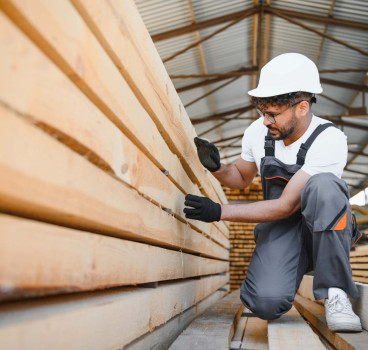Who decides when a building deserves to die?
Who decides when a building deserves to die? In an era of rapid urban development, where shiny new office blocks often replace structures steeped in history, the debate between preservation and progress has never been more heated. This is not just a matter of aesthetics - it touches on issues of cultural heritage, community identity, environmental sustainability and economic development, writes John Ridgeway.
Demolition is often seen as a necessary evil, the price we pay for progress. New developments promise a host of benefits, particularly as many outdated buildings can be inefficient, poorly designed and ill-equipped to meet the needs of a modern population. Demolition also makes way for structures with better energy efficiency, accessibility and technology.
Furthermore, new developments can stimulate economic activity by creating jobs, attracting investment and increasing property values - and demolition can revitalise blighted areas, transforming neglected spaces into vibrant hubs of activity. However, the relentless pursuit of the new often comes at a cost.
Preservationists argue that buildings are more than just bricks and mortar - they are repositories of history, culture and community memory. Demolishing them can erase cultural heritage. Historic buildings connect us to the past, providing tangible links to significant events, people and architectural styles.
Familiar landmarks and streetscapes also contribute to a sense of place and belonging, fostering community cohesion - and buildings can be works of art in themselves, showcasing innovative design and craftsmanship. Moreover, demolition has significant environmental implications.
The environmental cost of demolition
In an age of increasing environmental awareness, the sustainability of demolition is coming under scrutiny. Buildings contain "embodied carbon” - the greenhouse gas emissions associated with their construction, which includes the extraction of raw materials, the manufacturing of building products and transportation to the site. Demolishing a building releases that carbon back into the atmosphere, contributing to climate change.
Demolition also generates vast amounts of construction and demolition waste, much of which ends up in landfills. This waste can include hazardous materials, further harming the environment. Demolishing a building also means discarding valuable materials that could be reused or recycled, contributing to the depletion of natural resources.
That said, the decision to demolish a building is rarely straightforward. It involves a complex interplay of factors and stakeholders, including property owners/developers, who often prioritise maximising the economic potential of a site, which may or may not involve demolition and redevelopment.
Local government also plays play a crucial role in regulating development through zoning ordinances, building codes and historic preservation policies. However, different stakeholders often have conflicting interests, leading to contentious debates about which buildings should be saved and which should be sacrificed in the name of progress.
When demolition sparks controversy
We already have numerous examples which illustrate the complexities and controversies surrounding demolition. Here are just a few:
- Prentice Women's Hospital, Chicago: Designed by Bertrand Goldberg, this iconic example of mid-century modern architecture was demolished in 2013 despite fierce opposition from preservationists, who argued for its architectural significance. Northwestern University, the owner, argued that a new research facility was needed on the site.
- Morrison Hotel, Los Angeles: A historic landmark and a symbol of the city's musical past (it was featured on The Doors' "Morrison Hotel" album cover), the building was torn down in 2018 to make way for a luxury condominium development. Preservationists lamented the loss of a tangible connection to the city's cultural heritage.
- Heygate Estate, London: This large social housing complex was demolished as part of a major regeneration project in Elephant and Castle. While the demolition was intended to create new housing and improve the area, it was criticised for displacing long-time residents and destroying a strong community.
- Babri Masjid, Ayodhya, India: The demolition of this 16th-century mosque in 1992 was a deeply controversial event with significant political and social implications. The destruction of the mosque by Hindu nationalists led to widespread violence and highlighted the complex relationship between religious identity, cultural heritage, and political power.
These examples demonstrate that demolition decisions are rarely neutral or purely technical. They often involve conflicting values, competing interests and profound implications for communities and their cultural heritage.
However, in some cases, demolition is not carried out in the conventional way, but through a more insidious process known as "demolition by neglect." Property owners may deliberately neglect maintenance on historic buildings, allowing them to deteriorate to the point where demolition becomes the only viable option.

This practice raises further ethical questions. Is it morally acceptable, for example, for property owners to profit from the destruction of historic resources through neglect? What responsibilities do local governments have to prevent such demolition and how can they ensure the preservation of valuable buildings?
Finding a balance
The debate between preservation and progress is not a zero-sum game. It is possible to find a balance between the two, adopting a more nuanced and ethical approach to demolition. Preservation should be the default option, with demolition considered only as a last resort. Decisions about demolition should also be based on a comprehensive evaluation of a building's historical, architectural, cultural and social significance, as well as its potential for adaptive reuse.
Local communities should be actively involved in the decision-making process, with their voices heard and their concerns addressed. Instead of demolition, we should also explore the possibility of adaptively reusing existing buildings for new purposes. This can preserve their historic character while meeting contemporary needs.
However, when demolition is unavoidable, we should prioritise sustainable practices such as careful deconstruction, materials recycling and waste reduction. And when a historic building is demolished, consider measures to compensate for the loss, such as documenting the building, creating a memorial, or investing in the preservation of other historic resources.
The policies and practices surrounding demolition have profound implications for both the construction industry and local communities. Contractors and developers may need to develop new skills in historic preservation, renovation and sustainable construction. The demand for adaptive reuse projects could also create new business opportunities for companies specialising in this area.
In addition, the industry may need to shift its focus from large-scale new construction to more nuanced and context-sensitive projects that integrate existing structures and for local communities, the implications are equally significant.
Protecting historic buildings can help maintain a community's unique character and sense of place, fostering social cohesion and civic pride. Historic preservation can further stimulate local economies by attracting tourism, supporting small businesses and increasing property values.
Adaptive reuse projects can also help revitalise communities without displacing long-time residents, promoting equitable development and by reducing demolition waste and preserving embodied carbon, preservation can contribute to a more sustainable and resilient urban environment.
We can see therefore, that the question of when a building deserves to die is not a simple one. It requires careful consideration of the complex interplay of historical, cultural, social, economic and environmental factors. By adopting a more ethical and nuanced approach to demolition, we can move towards a built environment that balances progress with preservation, modernity with memory and development with respect for community and heritage.
Additional Blogs

What if Building Control went fully digital?
Building control governs structural integrity, fire protection, energy efficiency, accessibility and countless other aspects of design and construction. Historically, this process has been highly...
Read moreWhere most “Smart Buildings” go wrong
Smart buildings are often presented as the ultimate in modern construction - interconnected, efficient, intuitive and driven by real-time data. They promise lower operating costs, reduced energy use,...
Read more

The future of facilities management starts at RIBA Stage 0
Facilities management has traditionally been treated as a discipline that only becomes relevant once a building is handed over. At that point, FM professionals inherit decisions made months or years...
Read more